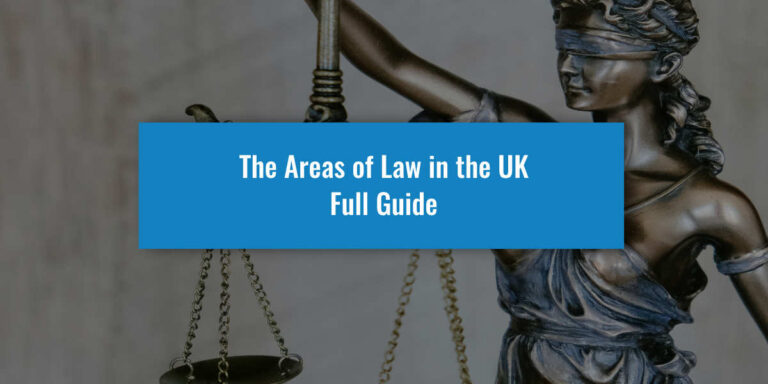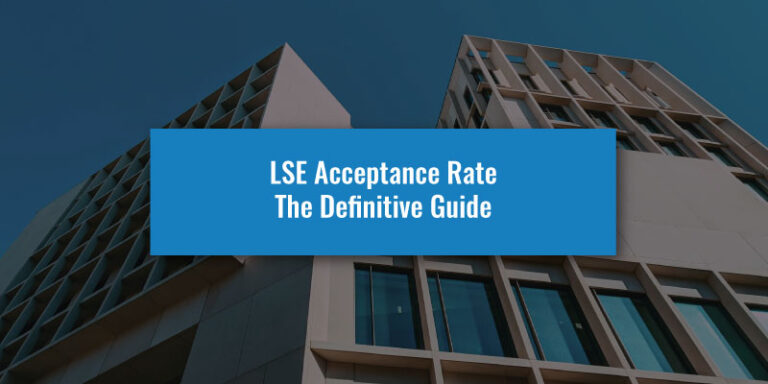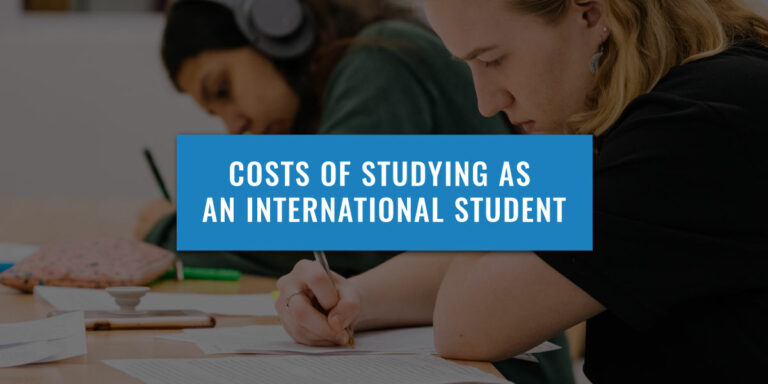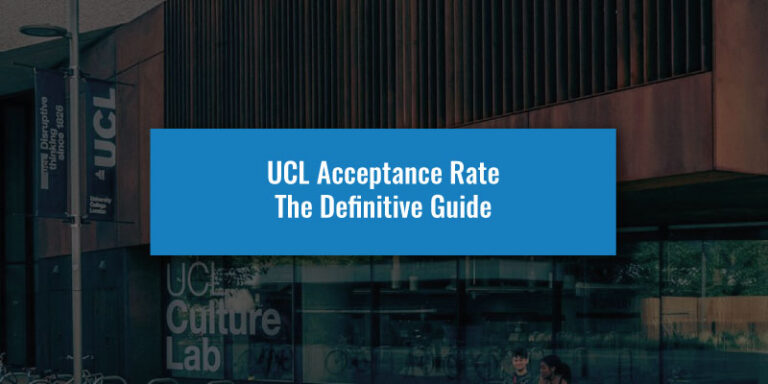The University of Oxford is one of the most prestigious universities in the world. With 20,000+ applicants each year competing for a very limit number of places, we know that the average chance of getting a place is very low compared to other universities.
This information is measured through rates for offers and acceptances, something we like to call success rates. These rates give us an amazing insight into which courses at Oxford are the easiest and most difficult to get into, as well as understanding how many applicants got their place in general.
In this guide, we’ll be exploring Oxford’s Admissions Statistics report to understand the acceptance rates of every undergraduate course taught there. Let’s get started!
Want to skip to the information about your subject? Select one of the buttons below:
University of Oxford Acceptances Rates - overall
For those who don’t know, a university’s “acceptance rate” is the percentage of applicants who are admitted to study at said university in a given year. This is calculated as:
Number of admitted applicants/Total number of applicants
While acceptance rates are important, it’s also important to consider a university’s offer rate, being the percentage of applicants who receive an offer. This figure will always be a bit higher, as applicants who receive an offer may not actually attend the university if they reject their offer or do not meet the required grades.
When it comes to Oxbridge applications (Oxford & Cambridge), many find the offer rates more important, as actually getting your offer is usually the hardest part of the application. As you’ll see in the data below, most applicants who receive their offer will end up getting their place.
With that in mind, let’s first take a look at the overall acceptance rates at Oxford for the past few years:
Oxford Acceptance Rates (2020 - 2024)
2024
Applicants: 23,061
Offers: 3,793
Acceptances: 3,245
Offer Rate: 16.4%
Acceptance Rate: 14.1%
2023
Applicants: 23,211
Offers: 3,721
Acceptances: 3,219
Offer Rate: 16.0%
Acceptance Rate: 13.9%
2022
Applicants: 23,819
Offers: 3,645
Acceptances: 3,271
Offer Rate: 15.3%
Acceptance Rate: 13.7%
2021
Applicants: 24,338
Offers: 3,555
Acceptances: 3,298
Offer Rate: 14.6%
Acceptance Rate: 13.6%
2020
Applicants: 23,414
Offers: 3,932
Acceptances: 3,695
Offer Rate: 16.8%
Acceptance Rate: 15.8%
As we can see, Oxford has seen fewer applicants each year since 2022, while the number of offers and have steadily risen during this time. This has led to an increased offer rate, while the acceptance rate has increased at a slower pace. All of this indicates that it has been getting easier to get into Oxford for the last few years (although 2020 still had the highest success rates of the past five years). If you want to learn more about the gender ratios for these stats, our guide to the Oxbridge Gender Gap explains everything you need to know.
What Are Cambridge's Acceptance Rates?
Compared to Oxford, the University of Cambridge usually has a higher offer and acceptance rate in general as the tend to admit more students. This means that Cambridge is slightly less competitive. Here are the statistics for the 2024 Entry admissions cycle:
2024
Applicants: 22,153
Offers: 4,760
Acceptances: 3,632
Offer Rate: 21.5%
Acceptance Rate: 16.4%
The acceptance rate at Cambridge was approximately 2.5% higher in 2024. The university typically sees around 1,000 fewer applicants than Oxford and sends over 1,000 more offers, so its admissions rates always look more favourable.
You can see all of the important statistics for Cambridge in our Cambridge Acceptance Rates Guide. We’ve also covered the success rates at Imperial College London in our Imperial Acceptance Rates Guide.
These statistics cover all admissions at Oxford, so they don’t necessarily represent your chances of success on your specific course. Acceptance rates tend to be very different across different degrees, so let’s review the 5 courses at Oxford with the most applicants.
16% of Oxford applicants were offered a place, but we got 59% of our students into Oxbridge.
If you want the best chance of getting into Oxford, enrol on an Oxbridge Full-Blue Programme to receive industry-leading support for your application. Each of our students has access to comprehensive resources, one-to-one tuition sessions, intensive courses and much more, all designed to give them the best possible chance of success.
Discover our Oxbridge Full-Blue Programmes by clicking the button below to learn how you can enrol and triple your chances of success.
Oxford Admissions Statistics - Top Five Subjects
These are the five most popular courses taught at Oxford, ranked by the number of applicants (based on 2024 Entry admissions). How difficult are they to get into? Let’s find out:
Oxford Mathematics Acceptance Rate
Although Mathematics has consistently been a popular degree at Oxford, it became the most applied for course in 2024, receiving nearly 100 more applications than the most popular degree from 2023. Due to its popularity, it could potentially be a difficult degree to get an offer for, so let’s look at the admissions statistics (as well as the figures from the previous admissions cycle):
2024
Applicants: 1,959
Offers: 205
Acceptances: 187
Offer Rate: 10.5%
Acceptance Rate: 9.5%
2023
Applicants: 1,807
Offers: 193
Acceptances: 179
Offer Rate: 10.7%
Acceptance Rate: 9.9%
While below average, Mathematics is far from the most competitive degree at Oxford. Despite getting significantly more applications in 2024, the offer and acceptance rates didn’t drop very far from the previous year.
Oxford Law Acceptance Rate
Law is another of the most popular courses in the UK, generally seeing more applicants than Medicine overall. However, at Oxford, it’s in second place, but is it more competitive?
2024
Applicants: 1,872
Offers: 216
Acceptances: 182
Offer Rate: 11.5%
Acceptance Rate: 9.7%
2023
Applicants: 1,858
Offers: 219
Acceptances: 192
Offer Rate: 11.8%
Acceptance Rate: 10.3%
Once again, these success rates are fairly average for an Oxford course. These rates are also significantly lower than Cambridge Law, which boasts an 18.0% offer rate and 14.7% acceptance rate from a cohort of over 230 students, noticeably bigger than Oxford’s.
Oxford PPE Acceptance Rate
PPE stands for Philosophy, Politics & Economics and is one of Oxford’s most iconic courses due to the amount of famous alumni it has produced. It was previously the most popular Oxford degree in 2023, but has since fallen to 3rd place. However, it’s still extremely popular, so let’s see how competitive it is:
2024
Applicants: 1,774
Offers: 270
Acceptances: 227
Offer Rate: 15.2%
Acceptance Rate: 12.8%
2023
Applicants: 1,864
Offers: 265
Acceptances: 229
Offer Rate: 14.2%
Acceptance Rate: 12.3%
PPE is actually fairly average in terms of competitiveness, at least by Oxford’s standards, and became less competitive in 2024. This is partly due to the decrease in applications and increase in offers, although the final cohort was two students smaller than 2023.
Oxford Physics Acceptance Rate
In 2023, Physics missed out on a spot in the Top 5 most popular courses at Oxford. However, in 2024, it was able to overtake it to become the 4th most popular. Is it competitive, though?
2024
Applicants: 1,518
Offers: 184
Acceptances: 173
Offer Rate: 12.1%
Acceptance Rate: 11.4%
2023
Applicants: 1,494
Offers: 190
Acceptances: 174
Offer Rate: 12.7%
Acceptance Rate: 11.6%
While the success rates for Physics have gone down slightly since 2023, applicants still have a fairly average chance of success in getting a place on this course.
Oxford Economics & Management Acceptance Rate
Economics is another of the most popular courses in the UK, and Oxford’s take has a unique spin, being both an Economics and Management course. How difficult is it to get onto this course?
2024
Applicants: 1,517
Offers: 93
Acceptances: 83
Offer Rate: 6.1%
Acceptance Rate: 5.5%
2023
Applicants: 1,542
Offers: 91
Acceptances: 83
Offer Rate: 5.9%
Acceptance Rate: 5.4%
Economics & Management is one of the most competitive courses at Oxford due to its very small cohort size of under 100 students. This is unusual for a major course like this, but it goes to show that your application is going to have to really stand out to be a part of the those 5% of successful applicants.
All of these courses are pretty competitive, meaning applicants need to work hard to stand out from the 1,000+ other prospective students in a given year. But what about the other courses Oxford offers? Some of these have far fewer applicants, so are they less competitive? Let’s take a look!
Access "The Big Book Of Oxbridge Applications" For FREE
Are you considering applying to Oxford or Cambridge? The Big Book of Oxbridge Applications is your must-have resource. Whether you’re exploring colleges, preparing for admissions tests, mastering your UCAS application, crafting a standout Personal Statement, or aiming for exam success, this free book will be invaluable to your preparation. You’ll find:
- Over 40 admissions test practice questions
- 28 example Oxbridge Personal Statements
- Interviews with Oxbridge students and graduates
- Additional downloadable resources
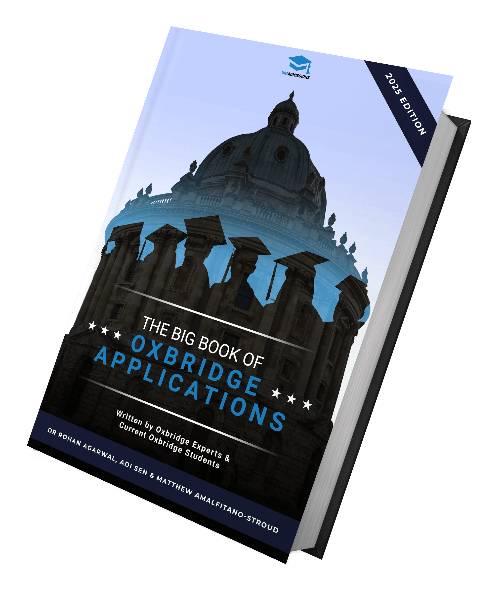
Oxford Acceptance Rates - A-Z
There are over 40 more courses to cover, so let’s go through them from A – Z:
Oxford Ancient & Modern History Acceptance Rate
2024
Applicants: 101
Offers: 27
Acceptances: 26
Offer Rate: 26.7%
Acceptance Rate: 25.7%
2023
Applicants: 98
Offers: 23
Acceptances: 20
Offer Rate: 23.5%
Acceptance Rate: 20.4%
Oxford Archaeology & Anthropology Acceptance Rate
2024
Applicants: 123
Offers: 27
Acceptances: 19
Offer Rate: 22.0%
Acceptance Rate: 15.4%
2023
Applicants: 125
Offers: 25
Acceptances: 22
Offer Rate: 20.0%
Acceptance Rate: 17.6%
Although these success rates are fairly high by Oxford standards, Cambridge’s Archaeology course had a 52% offer rate and a 28% acceptance rate, although there were 40 fewer applicants.
Oxford Asian & Middle Eastern Studies Acceptance Rate
2024
Applicants: 113
Offers: 45
Acceptances: 33
Offer Rate: 39.8%
Acceptance Rate: 29.2%
2023
Applicants: 109
Offers: 46
Acceptances: 35
Offer Rate: 42.2%
Acceptance Rate: 32.1%
Oxford Biochemistry Acceptance Rate
2024
Applicants: 886
Offers: 121
Acceptances: 103
Offer Rate: 13.7%
Acceptance Rate: 11.6%
2023
Applicants: 875
Offers: 115
Acceptances: 100
Offer Rate: 13.1%
Acceptance Rate: 11.4%
Oxford Biology Acceptance Rate
2024
Applicants: 731
Offers: 130
Acceptances: 109
Offer Rate: 17.8%
Acceptance Rate: 14.9%
2023
Applicants: 742
Offers: 128
Acceptances: 109
Offer Rate: 17.3%
Acceptance Rate: 14.7%
Oxford Biomedical Science Acceptance Rate
2024
Applicants: 494
Offers: 49
Acceptances: 43
Offer Rate: 9.9%
Acceptance Rate: 8.7%
2023
Applicants: 490
Offers: 46
Acceptances: 41
Offer Rate: 9.4%
Acceptance Rate: 8.4%
Oxford Chemistry Acceptance Rate
2024
Applicants: 1,070
Offers: 214
Acceptances: 185
Offer Rate: 20.0%
Acceptance Rate: 17.3%
2023
Applicants: 1,015
Offers: 207
Acceptances: 175
Offer Rate: 20.4%
Acceptance Rate: 17.2%
Oxford Classical Archaeology & Ancient History Acceptance Rate
2024
Applicants: 169
Offers: 37
Acceptances: 26
Offer Rate: 21.9%
Acceptance Rate: 15.4%
2023
Applicants: 152
Offers: 32
Acceptances: 25
Offer Rate: 21.1%
Acceptance Rate: 16.5%
Oxford Classics Acceptance Rate
2024
Applicants: 287
Offers: 121
Acceptances: 103
Offer Rate: 42.2%
Acceptance Rate: 35.9%
2023
Applicants: 313
Offers: 118
Acceptances: 100
Offer Rate: 37.7%
Acceptance Rate: 31.9%
Oxford Classics & English Acceptance Rate
2024
Applicants: 56
Offers: 18
Acceptances: 15
Offer Rate: 32.1%
Acceptance Rate: 26.8%
2023
Applicants: 60
Offers: 15
Acceptances: 13
Offer Rate: 25.0%
Acceptance Rate: 21.7%
Due to a combination of fewer applications and more offers, this degree became substantially easier to get into in 2024.
Oxford Classics & Modern Languages Acceptance Rate
2024
Applicants: 24
Offers: 11
Acceptances: 9
Offer Rate: 42.8%
Acceptance Rate: 37.5%
2023
Applicants: 23
Offers: 10
Acceptances: 10
Offer Rate: 43.5%
Acceptance Rate: 43.5%
Oxford Computer Science Acceptance Rate
2024
Applicants: 881
Offers: 66
Acceptances: 56
Offer Rate: 7.5%
Acceptance Rate: 6.4%
2023
Applicants: 866
Offers: 59
Acceptances: 52
Offer Rate: 6.8%
Acceptance Rate: 6.0%
Computer Science was one of the top five most popular subjects for applicants in 2024 at Cambridge, seeing over 1,800 applications. Despite this, the success rates for the course at each university remain consistently low (although Cambridge’s is slightly higher).
Oxford Computer Science & Philosophy Acceptance Rate
2024
Applicants: 135
Offers: 15
Acceptances: 14
Offer Rate: 11.1%
Acceptance Rate: 10.4%
2023
Applicants: 129
Offers: 15
Acceptances: 12
Offer Rate: 11.6%
Acceptance Rate: 9.3%
It’s a strange combination on the surface, but applicants for this version of Computer Science were generally more likely to be admitted, although the actual number of offers and acceptances were very low.
Oxford Earth Sciences Acceptance Rate
2024
Applicants: 172
Offers: 42
Acceptances: 34
Offer Rate: 24.4%
Acceptance Rate: 19.8%
2023
Applicants: 163
Offers: 42
Acceptances: 34
Offer Rate: 25.7%
Acceptance Rate: 20.1%
Oxford Engineering Science Acceptance Rate
2024
Applicants: 1,137
Offers: 204
Acceptances: 176
Offer Rate: 17.9%
Acceptance Rate: 15.5%
2023
Applicants: 1,031
Offers: 196
Acceptances: 163
Offer Rate: 19.0%
Acceptance Rate: 15.8%
Engineering was Cambridge’s most popular course in 2024 and had a lower acceptance rate of 14%. Although Oxford’s Engineering Sciences degree isn’t quite as revered, it’s still a great option if you’re not as confident in your application.
Oxford English Acceptance Rate
2024
Applicants: 869
Offers: 237
Acceptances: 206
Offer Rate: 27.3%
Acceptance Rate: 23.7%
2023
Applicants: 975
Offers: 249
Acceptances: 212
Offer Rate: 25.5%
Acceptance Rate: 21.7%
Oxford’s English Literature & Language course is a bit more in-demand than Cambridge’s offering, which only received 719 applicants in 2024 and only admitted 182.
Oxford English & Modern Languages Acceptance Rate
2024
Applicants: 102
Offers: 26
Acceptances: 24
Offer Rate: 25.5%
Acceptance Rate: 23.5%
2023
Applicants: 91
Offers: 37
Acceptances: 35
Offer Rate: 40.7%
Acceptance Rate: 38.5%
Oxford’s English & Modern Languages course saw a large increase in its success rates in 2023, with 2022 having only a 25% offer rate and 23% acceptance rate. However, the admissions seem to have stabilised in 2024, returning to a similar offer and acceptance rate to before.
Oxford European & Middle Eastern Languages Acceptance Rate
2024
Applicants: 30
Offers: 15
Acceptances: 13
Offer Rate: 50.0%
Acceptance Rate: 43.3%
2023
Applicants: 40
Offers: 15
Acceptances: 13
Offer Rate: 37.5%
Acceptance Rate: 32.5%
Despite seeing 25% fewer applicants, this course maintained the same number of offers and acceptances, leading to it having the highest success rates at Oxford in 2024.
Oxford Experimental Psychology Acceptance Rate
2024
Applicants: 402
Offers: 69
Acceptances: 55
Offer Rate: 17.2%
Acceptance Rate: 13.7%
2023
Applicants: 379
Offers: 56
Acceptances: 43
Offer Rate: 14.8%
Acceptance Rate: 11.3%
Oxford Fine Art Acceptance Rate
2024
Applicants: 248
Offers: 33
Acceptances: 28
Offer Rate: 13.3%
Acceptance Rate: 11.3%
2023
Applicants: 255
Offers: 31
Acceptances: 28
Offer Rate: 12.2%
Acceptance Rate: 11.0%
Oxford Geography Acceptance Rate
2024
Applicants: 290
Offers: 98
Acceptances: 80
Offer Rate: 33.8%
Acceptance Rate: 27.6%
2023
Applicants: 339
Offers: 90
Acceptances: 70
Offer Rate: 26.5%
Acceptance Rate: 20.6%
Oxford History Acceptance Rate
2024
Applicants: 951
Offers: 248
Acceptances: 209
Offer Rate: 26.1%
Acceptance Rate: 22.0%
2023
Applicants: 958
Offers: 254
Acceptances: 214
Offer Rate: 26.5%
Acceptance Rate: 22.3%
Although the success rates are nearly 10% lower, Oxford accepted roughly 40 more applicants for standard History than Cambridge in this application cycle.
Oxford History & Economics Acceptance Rate
2024
Applicants: 131
Offers: 17
Acceptances: 15
Offer Rate: 13.0%
Acceptance Rate: 11.5%
2023
Applicants: 158
Offers: 19
Acceptances: 18
Offer Rate: 12.0%
Acceptance Rate: 11.4%
Oxford’s History & Economics course was around 15% more competitive than the standard course despite having just over 13% of the applicants. It’s the most competitive variant of History that Oxford offers.
Oxford History & English Acceptance Rate
2024
Applicants: 97
Offers: 19
Acceptances: 15
Offer Rate: 19.6%
Acceptance Rate: 15.5%
2023
Applicants: 104
Offers: 13
Acceptances: 12
Offer Rate: 12.5%
Acceptance Rate: 11.5%
Oxford History & Modern Languages Acceptance Rate
2024
Applicants: 87
Offers: 25
Acceptances: 22
Offer Rate: 28.7%
Acceptance Rate: 25.3%
2023
Applicants: 72
Offers: 19
Acceptances: 18
Offer Rate: 26.4%
Acceptance Rate: 25.0%
Oxford History & Politics Acceptance Rate
2024
Applicants: 340
Offers: 53
Acceptances: 43
Offer Rate: 15.6%
Acceptance Rate: 12.6%
2023
Applicants: 381
Offers: 54
Acceptances: 48
Offer Rate: 14.2%
Acceptance Rate: 12.6%
Oxford History Of Art Acceptance Rate
2024
Applicants: 98
Offers: 18
Acceptances: 14
Offer Rate: 18.4%
Acceptance Rate: 14.3%
2023
Applicants: 107
Offers: 16
Acceptances: 14
Offer Rate: 15.0%
Acceptance Rate: 13.1%
Oxford Human Sciences Acceptance Rate
2024
Applicants: 161
Offers: 34
Acceptances: 29
Offer Rate: 21.1%
Acceptance Rate: 18.0%
2023
Applicants: 193
Offers: 32
Acceptances: 26
Offer Rate: 16.6%
Acceptance Rate: 13.5%
Oxford Law/LSE Acceptance Rate
2024
Applicants: 331
Offers: 34
Acceptances: 31
Offer Rate: 10.3%
Acceptance Rate: 9.4%
2023
Applicants: 341
Offers: 28
Acceptances: 26
Offer Rate: 8.2%
Acceptance Rate: 7.6%
Law with LSE (meaning Law Studies in Europe) is slightly more competitive than the standard course and is taught to a much smaller cohort.
Oxford Material Science Acceptance Rate
2024
Applicants: 211
Offers: 46
Acceptances: 42
Offer Rate: 21.8%
Acceptance Rate: 19.9%
2023
Applicants: 148
Offers: 48
Acceptances: 44
Offer Rate: 32.4%
Acceptance Rate: 29.7%
This degree saw a sharp decrease in its success rates thanks to an increase in applications in 2024. While it still has favourable chances of success (compared to many other Oxford courses), it’s now harder than ever to get a spot on this course, although more places may be made available in future cohorts to account for the increased demand.
Oxford Mathematics & Computer Science Acceptance Rate
2024
Applicants: 610
Offers: 68
Acceptances: 57
Offer Rate: 11.1%
Acceptance Rate: 9.3%
2023
Applicants: 593
Offers: 65
Acceptances: 51
Offer Rate: 11.0%
Acceptance Rate: 8.6%
Oxford Mathematics & Philosophy Acceptance Rate
2024
Applicants: 173
Offers: 17
Acceptances: 12
Offer Rate: 9.8%
Acceptance Rate: 6.9%
2023
Applicants: 163
Offers: 20
Acceptances: 19
Offer Rate: 12.3%
Acceptance Rate: 11.7%
Oxford Mathematics & Statistics Acceptance Rate
2023
Applicants: 142
Offers: 5
Acceptances: 3
Offer Rate: 3.5%
Acceptance Rate: 2.1%
Mathematics & Statistics was omitted from Oxford’s 2024 admissions table for currently unknown reasons. The course is still advertised on Oxford’s website and is available for application in the next admissions cycle.
Oxford Medicine Acceptance Rate
2024
Applicants: 1,500
Offers: 170
Acceptances: 160
Offer Rate: 11.3%
Acceptance Rate: 10.7%
2023
Applicants: 1,712
Offers: 162
Acceptances: 149
Offer Rate: 9.5%
Acceptance Rate: 8.7%
Medicine was previously the 4th most popular degree, but was overtaken by Physics in 2024. As we can see, it saw over 200 fewer applicants in 2024, which led to significantly increased success rates.
Oxford Modern Languages Acceptance Rate
2024
Applicants: 357
Offers: 174
Acceptances: 143
Offer Rate: 48.7%
Acceptance Rate: 40.1%
2023
Applicants: 309
Offers: 171
Acceptances: 145
Offer Rate: 55.3%
Acceptance Rate: 46.9%
Oxford Modern Languages & Linguistics Acceptance Rate
2024
Applicants: 89
Offers: 42
Acceptances: 33
Offer Rate: 47.2%
Acceptance Rate: 37.1%
2023
Applicants: 91
Offers: 41
Acceptances: 39
Offer Rate: 45.1%
Acceptance Rate: 42.9%
Oxford Music Acceptance Rate
2024
Applicants: 212
Offers: 94
Acceptances: 73
Offer Rate: 44.3%
Acceptance Rate: 34.4%
2023
Applicants: 169
Offers: 91
Acceptances: 81
Offer Rate: 53.8%
Acceptance Rate: 47.9%
Oxford Philosophy & Modern Languages Acceptance Rate
2024
Applicants: 54
Offers: 23
Acceptances: 22
Offer Rate: 42.6%
Acceptance Rate: 40.7%
2023
Applicants: 56
Offers: 24
Acceptances: 21
Offer Rate: 42.9%
Acceptance Rate: 37.5%
Oxford Philosophy & Theology Acceptance Rate
2024
Applicants: 154
Offers: 32
Acceptances: 25
Offer Rate: 20.8%
Acceptance Rate: 16.2%
2023
Applicants: 146
Offers: 28
Acceptances: 25
Offer Rate: 19.2%
Acceptance Rate: 16.9%
Oxford Physics & Philosophy Acceptance Rate
2024
Applicants: 154
Offers: 16
Acceptances: 16
Offer Rate: 10.4%
Acceptance Rate: 10.4%
2023
Applicants: 139
Offers: 15
Acceptances: 12
Offer Rate: 10.8%
Acceptance Rate: 8.6%
With roughly 10% of the applicants and 9% of the available places of Physics, this variant has slightly lower success rates. It’s also one of only two Oxford courses to admit all of its offer-holders in 2024.
Oxford PPL Acceptance Rate
2024
Applicants: 245
Offers: 43
Acceptances: 34
Offer Rate: 17.6%
Acceptance Rate: 13.9%
2023
Applicants: 275
Offers: 48
Acceptances: 38
Offer Rate: 17.5%
Acceptance Rate: 13.8%
PPL stands for Psychology, Philosophy & Linguistics and had fairly average success rates in 2024 despite the small cohort.
Oxford RAMES Acceptance Rate
2024
Applicants: 14
Offers: 3
Acceptances: 3
Offer Rate: 21.4%
Acceptance Rate: 21.4%
2023
Applicants: 3
Offers: 1
Acceptances: 1
Offer Rate: 33.3%
Acceptance Rate: 33.3%
RAMES stands for Religion & Asian & Middle Eastern Studies and was by far the least popular course at Oxford in both 2023 and 2024. Although it saw an over 400% increase in applications in 2024, it still only admitted 3 students onto the course. Despite these admissions statistics, the course continues to be open for applications.
Oxford Theology & Religion Acceptance Rate
2024
Applicants: 132
Offers: 44
Acceptances: 38
Offer Rate: 33.3%
Acceptance Rate: 28.8%
2023
Applicants: 116
Offers: 54
Acceptances: 46
Offer Rate: 46.6%
Acceptance Rate: 39.7%
That’s the acceptance rate for every undergraduate course at Oxbridge. We’ve also covered the undergraduate acceptance rates from each Oxford college, so discover the stats here. However, now it’s time to unpack this information and see what we can learn.
Triple your chances of Oxford success with UniAdmissions
In 2024, we got 59% of our students into Oxford or Cambridge, more than three times higher than the national average. We achieved that by offering the best support for our students; support that you can access too when you enrol for one of our Oxbridge Full-Blue Programmes.
Discover our Full-Blue Programmes by clicking the button below to learn how you can enrol and triple your chances of success.
Oxford Admissions Statistics - What Can We Learn?
Before we continue, it’s important to note that all of this data and more can be found in the Oxford Admissions Statistical Report for 2024 admissions, as well the corresponding public Tableau page. If you want to explore all the data further, be sure to check out these documents.
With that in mind, let’s look at some of the most important and interesting details we can learn from the Oxford Admissions Statistics.
Oxford's Most Competitive & Least Competitive Courses
If you’re undecided about what you want to study, you may be keen to learn which courses are the easiest and hardest to get into. Bear in mind that no course at Oxford is “easy” to get into, but some certainly are less competitive due to fewer applicants or more places.
You should apply to the subject that you’re most interested in, but having a better understanding of these things may still influence your decision somewhat, so let’s take a look:
Hardest Oxford Courses To Get Into
Firstly, let’s look at the courses with lowest offer and acceptance rates:
Lowest Offer Rates At Oxford 2024
| Course | Applicants | Offers | Offer Rate |
|---|---|---|---|
| Economics & Management | 1,517 | 93 | 6.1% |
| Computer Science | 881 | 66 | 7.5% |
| Mathematics & Philosophy | 173 | 17 | 9.8% |
| Biomedical Sciences | 494 | 49 | 9.9% |
| Law/LSE | 331 | 34 | 10.3% |
Lowest Acceptance Rates At Oxford 2024
| Course | Applicants | Acceptances | Acceptance Rate |
|---|---|---|---|
| Economics & Management | 1,517 | 83 | 5.5% |
| Computer Science | 881 | 56 | 6.4% |
| Mathematics & Philosophy | 173 | 12 | 6.9% |
| Biomedical Sciences | 494 | 43 | 8.7% |
| Mathematics & Computer Science | 610 | 57 | 9.3% |
This data shows that Economics & Management is the most competitive course at Oxford, with a staggeringly low 6.1% offer rate and 5.5% acceptance rate – the lowest of any Oxbridge course in 2024. It’s also one of the most popular degrees at the university, but there is no sign of available places being increased to meet this demand.
Many of the other courses on these lists are pretty popular too, including Biomedical Sciences, Computer Science and Mathematics & Computer Science. The LSE variant of Oxford’s Law degree is also a notable addition to these lists, despite its offer rate not being too much lower than standard Law.
Easiest Oxford Courses To Get Into
On the opposite end, let’s look at the courses with the highest offer and acceptance rates:
Highest Offer Rates At Oxford 2024
| Course | Applicants | Offers | Offer Rate |
|---|---|---|---|
| European & Middle Eastern Languages | 30 | 15 | 50.0% |
| Modern Languages | 357 | 174 | 48.7% |
| Modern Languages & Linguistics | 89 | 42 | 47.2% |
| Classics & Modern Languages | 24 | 11 | 45.8% |
| Music | 212 | 94 | 44.3% |
Highest Acceptance Rates At Oxford 2024
| Course | Applicants | Acceptances | Acceptance Rate |
|---|---|---|---|
| European & Middle Eastern Languages | 30 | 13 | 43.3% |
| Philosophy and Modern Languages | 54 | 22 | 40.7% |
| Modern Languages | 357 | 143 | 40.1% |
| Classics & Modern Languages | 24 | 9 | 37.5% |
| Modern Languages & Linguistics | 89 | 33 | 37.1% |
Typically, courses with higher success rates are more niche with fewer applicants. This is certainly true here, with none of the entries hitting more than 400 applicants.
The majority of these courses relate to languages, with only Music breaking this trend. While Modern Languages is a fairly popular course, none of its variants had more than 100 applicants.
It’s worth noting that there aren’t any STEM subjects featured here, showing that those degrees are generally more competitive (the easiest STEM course at Oxford was Material Science with a 20% acceptance rate.
This information is incredibly useful for those planning on applying to any of these subjects, but let’s look at a few more general data points to see what we can learn about how Oxford tackles their admissions process.
Oxford Admissions Statistics: State Vs Private School
One major talking point surrounding Oxbridge admissions has been the differences between admissions of students from State/Maintained Schools and Private/Independent Schools, as well as the proportionality compared to student numbers in the UK. Previously there were complaints about how many applicants from state schools were being admitted, but it’s now standard to see a much higher percentage of state school applicants being admitted over private school.
Oxford State School Application Statistics 2024
Applicants: 10,258
% of Total Applicants: 69.8%
Offers: 1,964
% of Total Offers: 65.6%
Offer Rate: 19.1%
Acceptances: 1,668
% of Total Acceptances: 63.9%
Acceptance Rate: 16.3%
Oxford Private School Application Statistics 2024
Applicants: 3,852
% of Total Applicants: 26.2%
Offers: 933
% of Total Offers: 31.1%
Offer Rate: 24.2%
Acceptances: 851
% of Total Acceptances: 32.6%
Acceptance Rate: 22.1%
This data only covers home applicants and excludes 3.7% of applicants from other backgrounds. From the data, we can see that state school applicants outnumber private schools in each metric. This is to be expected since state school applicants far outnumber private schools in the UK, but it is also worth noting that private school applicants had a nearly 6% higher acceptance rate overall and have larger proportional representation in offers and acceptances when compared to the percentage of applicants.
There are a number of reasons as to why this may be the case, but at least we can we can dispel the myth that “No one at Oxbridge is from State Schools” (even if Private School students have a slightly better chance of success).
Oxford Application Statistics: International Applications
Although there’s a financial incentive for universities to admit more international applications, overseas applicants are generally in for a rougher time when applying to Oxbridge. This could be for a number of reasons, but it seems that both universities generally have a preference to admit those living in the UK.
Below are the overall figures for UK, EU and Non-EU applicants in 2024:
Oxford UK Applications 2024
Applicants: 14,694
% of Total Applicants: 63.7%
Offers: 2996
% of Total Offers: 79.0%
Offer Rate: 20.4%
Acceptances: 2,612
% of Total Acceptances: 80.5%
Acceptance Rate: 17.8%
Oxford EU Applications 2024
Applicants: 1,492
% of Total Applicants: 6.5%
Offers: 125
% of Total Offers: 3.3%
Offer Rate: 8.4%
Acceptances: 103
% of Total Acceptances: 3.2%
Acceptance Rate: 6.9%
Oxford Non-EU Applications 2024
Applicants: 6,875
% of Total Applicants: 29.8%
Offers: 672
% of Total Offers: 17.7%
Offer Rate: 9.8%
Acceptances: 530
% of Total Acceptances: 16.3%
Acceptance Rate: 7.7%
Here, we can see that UK applicants made up the vast majority of applications offers and acceptances. When combining all international applicants, they made up 36.5% of applicants, 21.0% of offer holders and 19.5% of accepted students, just under 1/5. These statistics are actually down from 2023, where international students made up 20.5% of acceptances.
We can see this disparity most in the difference in acceptance rates, with UK applicants having an acceptance rate of 17.8% and non-UK applicants having roughly 7.6%. We’ve already explored which colleges at Oxford had the highest and lowest success rates for international applicants, with that data lining up well with this figure. While Oxford accepts applicants from most countries in the world, there are a few that stand out on top in terms of applicants and admissions:
Top 10 Countries For International Oxford Admissions (2022 - 2024) - Applications
| Country | Applications (2022-2024) |
|---|---|
| China | 6,372 |
| USA | 2,629 |
| India | 1,757 |
| Singapore | 1,754 |
| Hong Kong | 1,257 |
| Canada | 848 |
| Germany | 762 |
| Malaysia | 679 |
| France | 591 |
| Spain | 517 |
Top 10 Countries for International Oxford Admissions (2022 - 2024) - Admitted Students
| Country | Admitted Students (2022-2024) | Acceptance Rate (2024-2024) |
|---|---|---|
| China | 566 | 8.9% |
| Singapore | 257 | 14.7% |
| USA | 172 | 6.5% |
| Hong Kong | 148 | 11.8% |
| India | 74 | 4.2% |
| Australia | 58 | NA (Data Unavailable) |
| France | 51 | 8.6% |
| Germany | 48 | 6.3% |
| Canada | 36 | 4.2% |
| Turkey | 33 | NA (Data Unavailable) |
As you can see, over this 3-year period, the countries with the most applicants and admitted students are roughly the same, with a few outliers.
The countries at the top are all ones that you would expect to see bringing in lots of applications, including China and the United States of America, although Singapore is also a major contributor to Oxbridge applications (Singapore’s applicants had the best success rate for both Oxford and Cambridge applicants, according to the data available).
One thing that remains consistent between Oxford and Cambridge international applications is that these larger countries that bring in the most applications usually have very low success rates, as the number of admitted students doesn’t tend to be proportional to how many apply. This goes to show just how competitive international Oxford applications can be.
The countries with the lowest success rates on this list were India and Canada, with just 4,2% of their applicants being admitted. While applicants from these countries should still apply to Oxford if they are certain that they want to study there, it’s important to consider these success rates so that you can work to make your application truly stand out or seek support from an external source.
Now that you have a better sense of the success rates at Oxford, you should use this data to help you in the application process. While it may be helpful to consider when choosing your course, it’s always a better idea to choose the course that you’re more interested in as having a genuine desire to study will elevate your application, especially during the interviews.
No matter how high or low the acceptance rate is on your chosen course, it’s still important that you put as much effort as you can into your application, as it’s still highly competitive to get into any Oxford or Cambridge course. Even in the least competitive courses at Oxbridge, you have a less than 50% chance to be admitted, so your application needs to be up to the Oxbridge standard either way. Also, keep in mind that Oxford is a part of the Russell Group, whose members have extremely varied acceptance rates.
If you want to learn more about the Oxford admissions process, be sure to explore our huge selection of guides that cover everything from college selection to interviews. If you want to go even further, explore our Oxbridge Full-Blue Programmes to learn how you can enrol and receive the most comprehensive and effective Oxbridge application support around. We’ve achieved a 59% success rate, meaning we can more than triple your chances of success. Either way, we wish you the best of luck with your Oxford application!
Less than 16% of Oxford applicants were offered a place, but we got 59% of our students into Oxbridge.
If you want the best chance of getting into Oxford, enrol on an Oxbridge Full-Blue Programme to receive industry-leading support for your application. Each of our students have access to comprehensive resources, one-to-one tuition sessions, intensive courses and much more, all designed to give them the best possible chance of success.
Discover our Oxbridge Full-Blue Programme by clicking the button below to learn how you can enrol and triple your chances of success.
